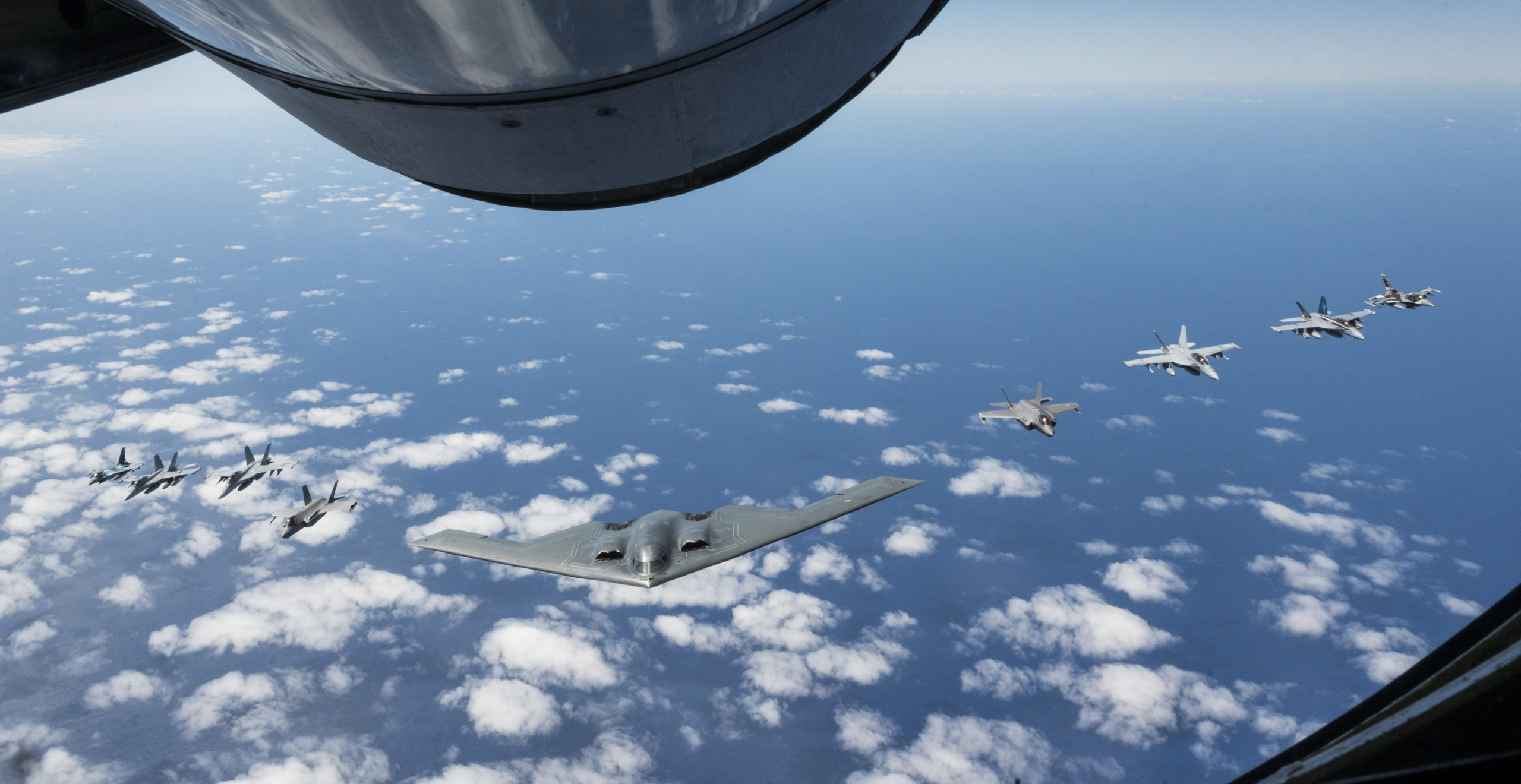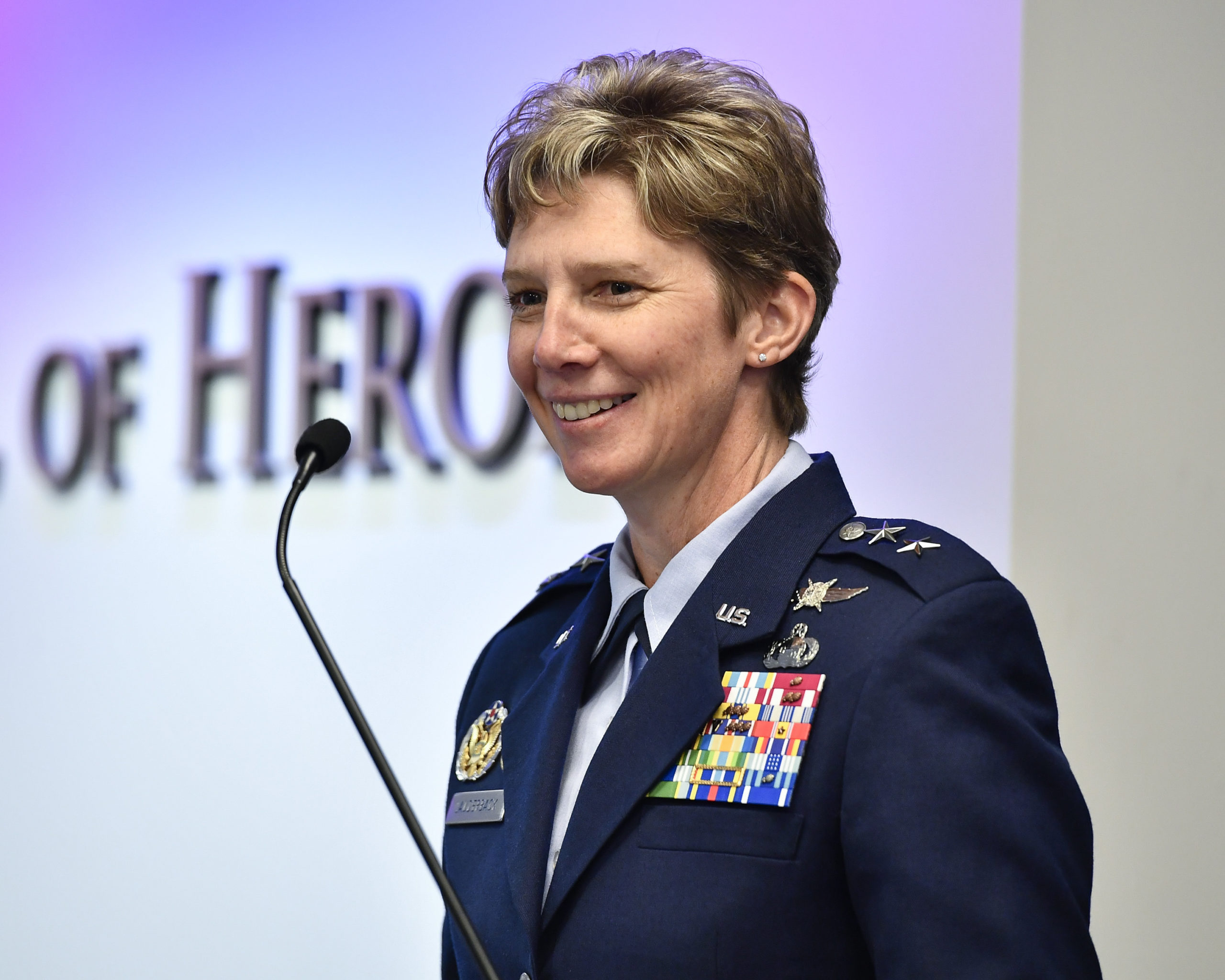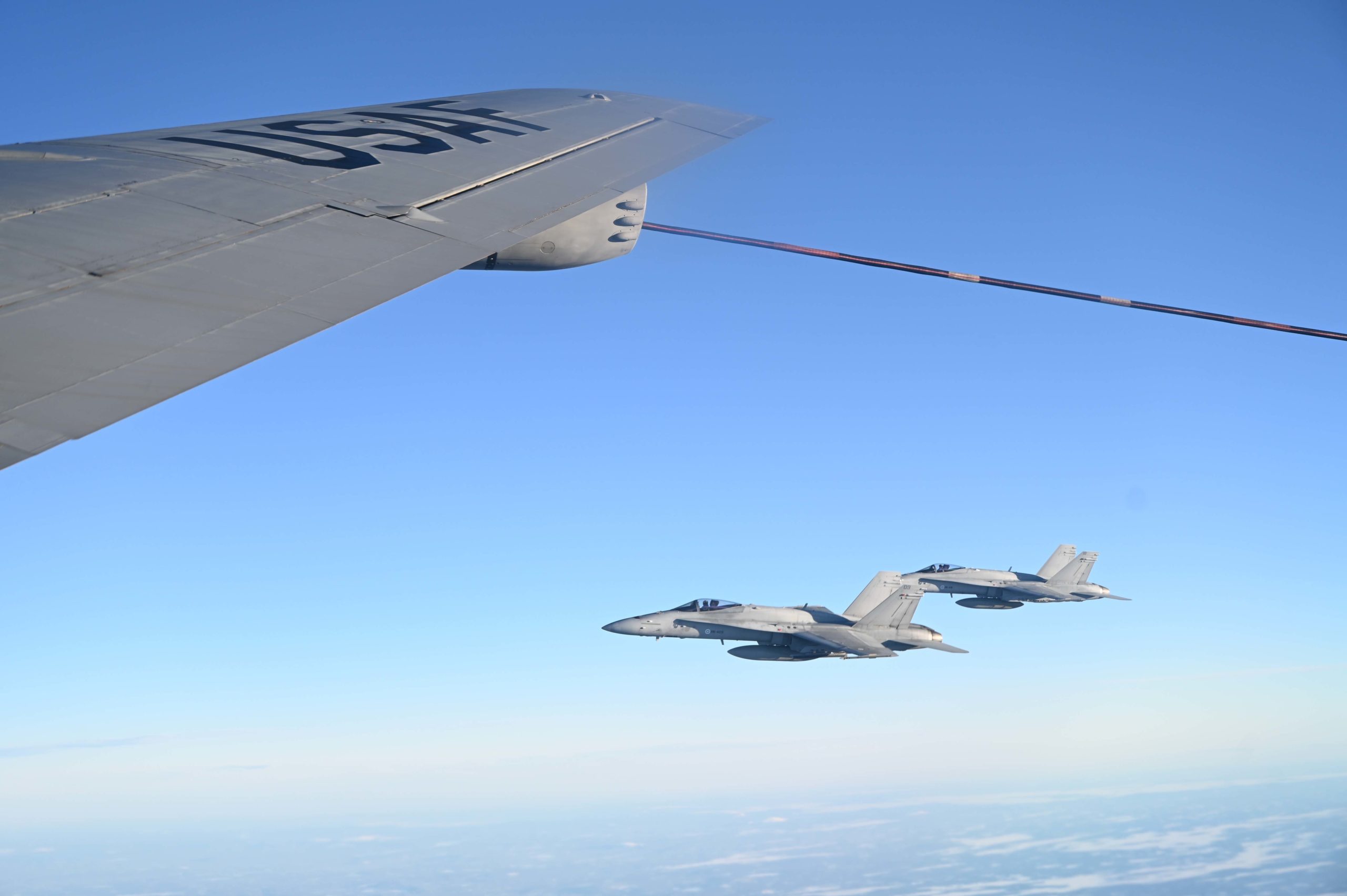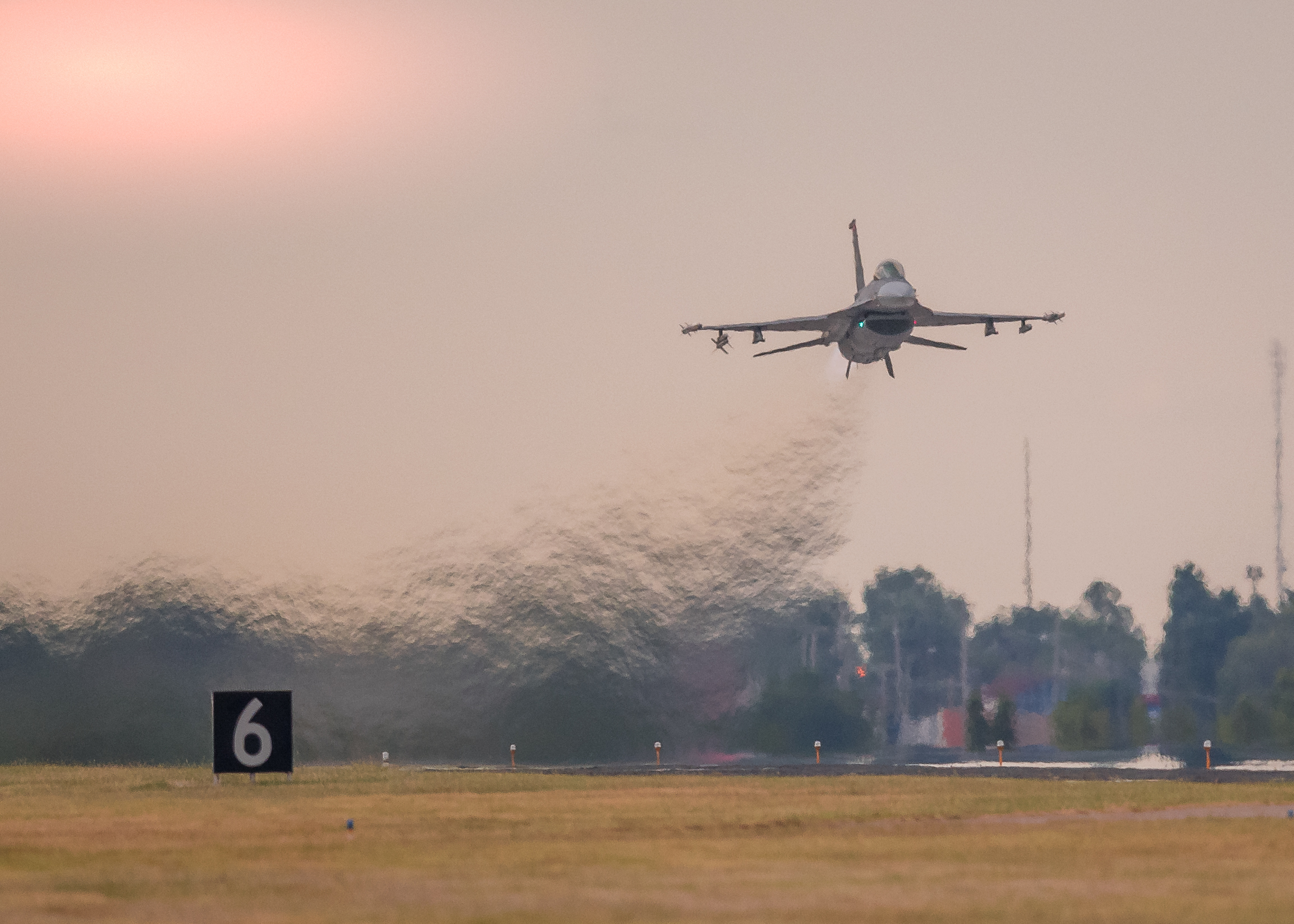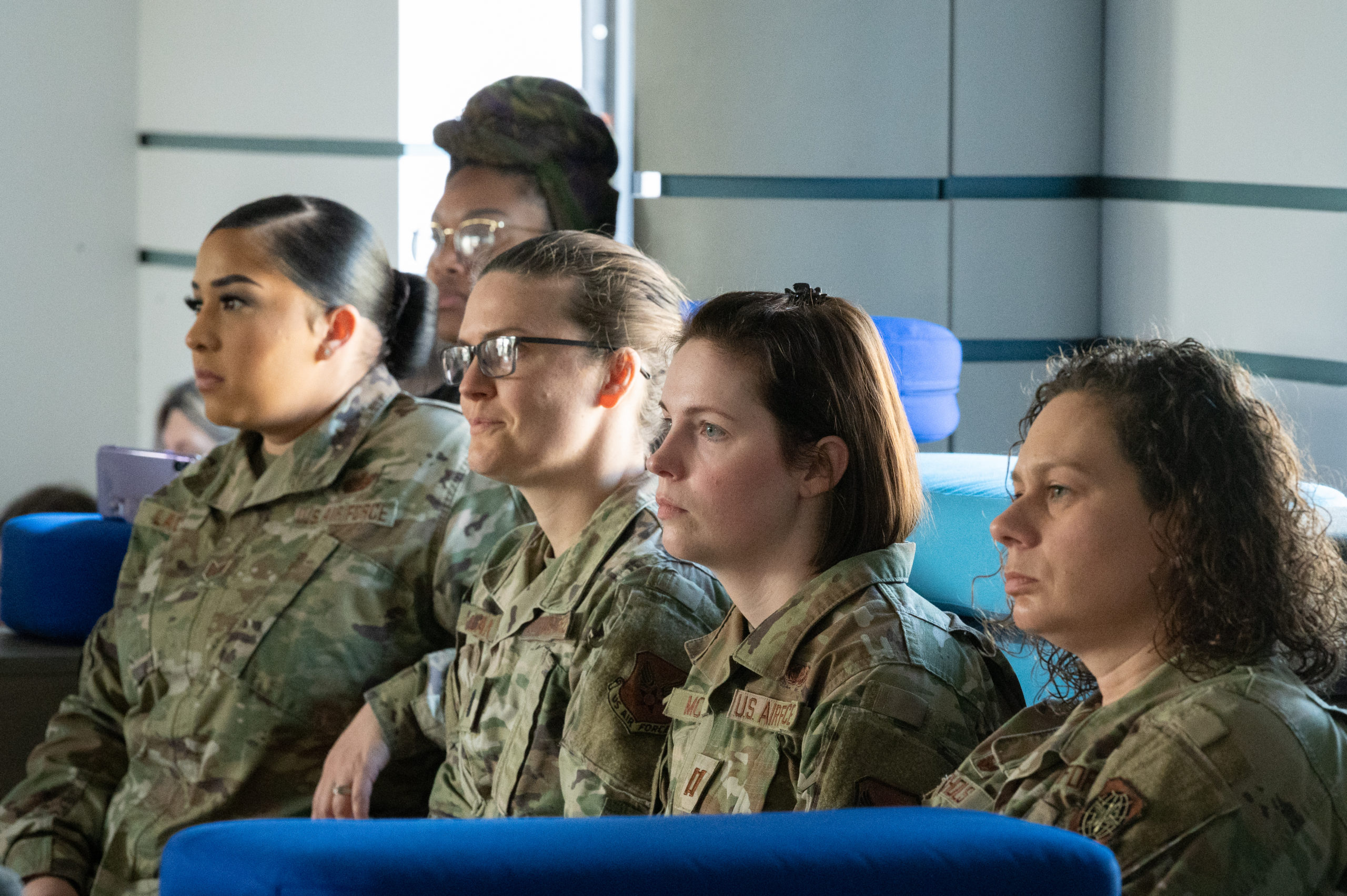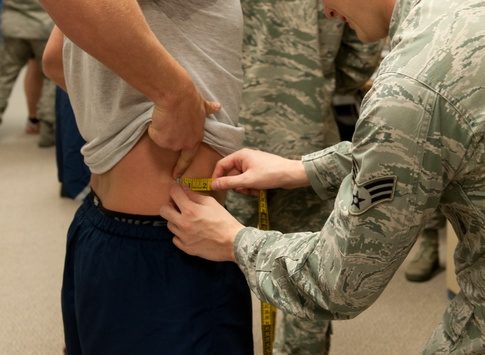
A U.S. Air force B-2 Spirit from Whiteman Air Force Base, Missouri, flies in formation with two Royal Australian Air Force F-35A Lightning IIs, two RAAF F/A-18F Super Hornets, two RAAF EA-18 Growlers, and two U.S. Air Force F-16C Aggressors from Eielson Air Force Base, Alaska during a training mission in the Indo-Pacific region, March 23, 2022. Once in Australian airspace, the B-2 crews from the 509th Bomb Wing teamed up with a KC-135 Stratotanker from the Alaska Air National Guard to complete aerial refueling before integrating with the eight fighter aircraft. U.S. Air Force photo by Tech. Sgt. Hailey Haux

U.S. Air Force Senior Master Sgt. Wes Hudnall, Alaska Air National Guard KC-135 Stratotanker boom operator conducts aerial refueling operations for a B-2 Spirit during a training mission in the Indo-Pacific region, March 23, 2022. During the more than 50-hour round-trip trek to Australia and back, the B-2 received aerial refueling from numerous tanker aircraft—ensuring the mission was successful and further demonstrating the U.S. Air Forces’ global strike capabilities. U.S. Air Force photo by Tech. Sgt. Hailey Haux

A B-2 Spirit sits at Royal Australian Air Force Base Amberley, Australia. After conducting integration with RAAF and U.S. fighters during a training mission in the Indo-Pacific region, March 23, 2022. After integrating in Australian airspace with more than eight joint and combined aircraft, the B-2 pilots landed at Amberley—for the first time—and conducted a crew swap on the ground before becoming airborne and integrating with F-22 Raptors from Joint Base Pearl Harbor-Hickam, Hawaii, and returning back to Whiteman. Exercising interoperability between the U.S. and Australia improves our great alliance and allows us to respond even faster, promoting security cooperation across the region. U.S. Air Force photo by Tech. Sgt. Hailey Haux

A U.S. Air force B-2 Spirit from Whiteman Air Force Base, Missouri, flies in formation with two Royal Australian Air Force F-35A Lightning IIs, two RAAF F/A-18F Super Hornets, two RAAF EA-18 Growlers, and two U.S. Air Force F-16C Aggressors from Eielson Air Force Base, Alaska during a training mission in the Indo-Pacific region, March 23, 2022. This mission was conducted to support Pacific Air Forces’ training efforts with allies and partners in support of a free and open Indo-Pacific. U.S. Air Force photo by Tech. Sgt. Hailey Haux

A B-2 Spirit sits at Royal Australian Air Force Base Amberley, Aus. After conducting integration with RAAF and U.S. fighters during a CONUS-to-CONUS training mission in the Indo-Pacific region, March 23, 2022. After integrating in Australian airspace, the B-2 pilots landed at Amberley—for the first time ever—and conducted a crew swap on the ground before becoming airborne and integrating with F-22 Raptors from Joint Base Pearl Harbor-Hickam, Hawaii, then returning back to Whiteman. Enhanced Air Cooperation improves our ability to train and operate with our allies and partners across the region promoting security cooperation across the region. U.S. Air Force photo by Tech. Sgt. Hailey Haux

A B-2 Spirit from Whiteman Air Force Base, Missouri, prepares to conduct aerial refueling operations with a KC-135 Stratotanker from the Alaska Air National Guard, during a training mission in the Indo-Pacific region, March 23, 2022. Once in Australian airspace, the B-2 crews from the 509th Bomb Wing teamed up with the tanker before integrating with eight fighter aircraft—two RAAF F-35A Lightning IIs, two Royal Australian Air Force EA-18 Growlers, two RAAF Super Hornets and two U.S. Air Force F-16C Aggressors —to conduct training operations. U.S. Air Force photo by Tech. Sgt. Hailey Haux

A B-2 Spirit from Whiteman Air Force Base, Missouri, flies alongside a KC-135 Stratotanker from the Alaska Air National Guard during a training mission with the Royal Australian Air Force in the Indo-Pacific region, March 23, 2022. U.S. Air Force photo by Tech. Sgt. Hailey Haux

A B-2 Spirit prepares to land at Royal Australian Air Force Base Amberley, Australia after conducting integration with RAAF and U.S. fighters during a training mission in the Indo-Pacific region, March 23, 2022. The mission provided an opportunity to train and work with our allies and partners in joint and coalition operations and exercises. U.S. Air Force photo by Tech. Sgt. Hailey Haux
